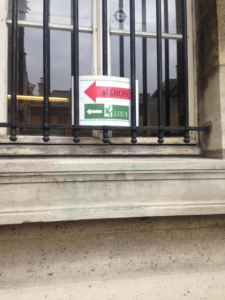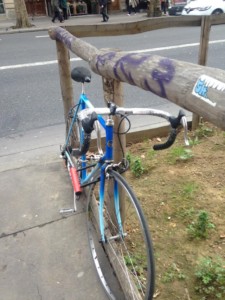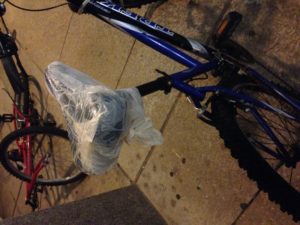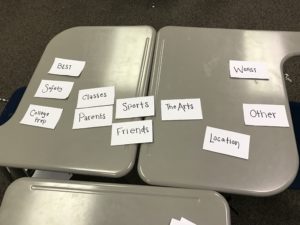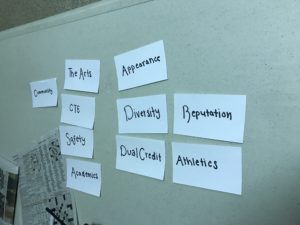IDEATION SUMMARY:
For the following three central ideas, the team tried to combine several of our ideas to achieve the most likely ideas to prototype. We also tried to achieve a wide variety of focuses.
Connect with Clay: (AKA Bridge Program)
The Connect Clay Program would establish concrete ways in which CHS students could interact with the community and middle school students. The more connected CHS is, the more positive commentary will circle and the more powerful word of mouth will be.
- Tutoring of Advanced Clay Students (ACADEMICS)
- Student Social Media Post Day (MEDIA)
- Boys and Girls Club Connection (
- Clay Sports Teams Sponsor Teams of Younger Kids (SPORTS)
- Inviting Middle School/Elementary School Students to Act in Musicals/Plays (THEATRE)
- Hosting Art Classes for People in the Community? (ART)
Entice: Advertise in middle schools, use art teachers, athletic coaches to go into the schools to encourage students to come and develop their skills. Sell them on building a connection with Clay to do work that otherwise wouldn’t be possible. SELL CONTINUITY
Enter: Get students enrolled in camps, classes during the summer
Engage: Make sure they receive good coaching, good teaching etc
Exit: At end of summer, lesson, give a speech to encourage them to continue coming back and to continue this journey at Clay high school. Students voice to their parents that they want to attend Clay High School
Extend: Reviews, ripple effect, students who go through the program through word of mouth encourage other students to attend.
Offering Opportunities // Building a Better CHS
A large part of the solution is focusing on marketing and how people find out about Clay, but we also wanted to touch on potential ways to improve Clay itself so that students want to stay there and tell their friends to go there.
One of these ideas was some sort of ND Connection. This could include tutors from ND coming to Clay and helping with academics, or ND art students working on joint projects with CHS students.
Another potential recommendation was to improve the physical appearance of CHS. Our recommendation for this was to paint the lockers and add some color to the slightly drab hallways in that way.
Another option, Hire better teachers, counsellors, tutoring, better coaches, fight song, identity, etc. And pair teachers with students.
Entice: Attractive facilities of the school will entice students to attend Clay.
Enter: The feeling that the school looks nice and has a good ambience will encourage students to enroll in Clay High School
Engage: Students need to feel engaged in their passions and their education. They need to feel like they are equipped to accomplish their goals: job or college. They also need to feel proud of being a CHS student.
Exit: Need to feel Nostalgia and look back on time at CHS with pride and. They need to miss being at CHS, the connections, the family
Extend: The positive experience at CHS then gets passed along through word of mouth and Clay has an identity.
Other Options:
- South Bend Connection?
- Advanced Students tutoring average students
Marketing Approach
Our primary idea for a marketing approach is a video that shows what a day in the life of CHS is like, and makes students excited to go to a school like Clay.
- Video
- Show it in the middle schools
- CHS informational day
- Send to Counselors
- Mass Social Media Post
Entice: Students are more visually engaged than brochures and informational talks, and having that information explained through a video format readily available would be more effective of a tool.
Enter: The video would distributed through social media platforms or at the beginning of an informational session about Clay.
Engage: The video would demonstrate the various types of students, following them through their daily life and what their 4 years would look like.
Exit: The video ends with a pitch specifying that the student watching the video should really consider Clay as an option and recommend them to pursue more resources to find out more about CHS.
Extend: Students, excited by the video, share the video amongst their friends, maybe to try and convince them to look at Clay with them all together.
- Other Options:
- Virtual Tour
- Synchronize materials
- Parents commit to telling their friends.
